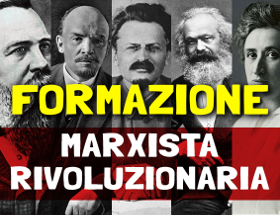Internazionale
NYC’s Zohran Mamdani. Good intentions are not enough
4 Novembre 2025
Polls project that Zohran Mamdani will be elected mayor of New York City (NYC) on November 4, 2025, with a plurality but not a majority of the popular vote. His website summarizes the theme of his campaign: “Zohran Mamdani is running for Mayor to lower the cost of living for working class New Yorkers.”
His platform is a set of municipal reforms to do this, including freezing the rent on rent-stabilized apartments, fare-free buses, and no-cost childcare, paid for by higher taxes on big corporations and the wealthy.
When asked by reporters, Mamdani acknowledges that he is a socialist and a member of Democratic Socialists of America (DSA), but he isn’t running as either. His website doesn’t mention socialism or DSA, and in interviews he pointedly says that DSA’s program is not his.
He has walked back his previously radical statements on the police and Palestine and presents himself as a loyal Democrat. He is running with the support of top Democratic Party leaders, including New York Governor Kathy Hochul and former presidential candidate Kamala Harris, and the acquiescence of the party-aligned media, including the New York Times, and major donors, including Mike Bloomberg.
Polls project that Mamdani will win about 45 percent of the popular vote. He will have the support of only a minority of the NYC City Council, little backing from the state government, and hostility from the Trump administration. As a result, his administration won’t have the resources to implement his program.
Mass mobilization could alter the balance of forces, make NYC ungovernable, and win major reforms. But there’s no sign that Mamdani will take that road or that his supporters will take it without him.
Revolutionary socialists should, in my view, support Mamdani’s reforms without supporting his electoralist strategy or his Democratic Party campaign. We should say that we would support him, if he were running independently as a DSA candidate against the Democrats.
We should propose mass mobilization and participate in any actions that jump off. We should help workers and youth inspired and then disappointed by Mamdani to come away from the experience more determined to fight and with a clearer vision of the political independence needed to win.
MAMDANI'S ELECTORALIST STRATEGY
Mamdani’s reasoning is familiar: 1) to enact reforms, I must be elected to office, 2) to be elected to office, I must run as a Democrat, and 3) to run as a Democrat and be elected to office, I must moderate my positions and reassure the party leadership that I can be trusted.
If Mamdani is inaugurated mayor on January 1, as seems probable, his administration will face an impossible situation. Let’s look at the three reforms listed above.
Rent control is a notoriously tricky business, since it attempts to control the price of housing without controlling the supply.
Landlords and real estate developers have many ways to circumvent rent controls. The controls usually allow them to raise rents as their costs go up and as they make supposed improvements to the buildings. They can usually set rents for new units to market rates and reset rents for existing units to market rates when tenants move out.
Their ultimate power is that they control the supply of housing. They can choose not to maintain existing housing or to build new housing. Faced with that, especially in a tight housing market like NYC, rent control boards usually back down. Landlords and developers make big contributions to politicians to make sure they do.
With a minority on the city council, Mamdani may not even be able to get the rent-stabilization board to freeze rents. The state legislature in Albany may limit what the board is allowed to do. And the Trump administration may deny crucial funding and loan guarantees.
Mamdani’s slogan is “fast, fare-free buses.” Fare-free is easy, but fast requires that there be many buses and drivers and that the buses be kept in good repair. That requires money.
Mamdani proposes that corporations and the wealthy pay for his reforms. But the city has no control over that. Tax increases have to be approved by the state government, and Governor Hochul has already said “no.”
Mamdani proposes both no-cost childcare and raising the wages of childcare workers to the level of public school teachers. Worthy goals and good public policy. But extremely expensive, unless the ratio of children to providers is very high, in which case parents will look elsewhere. Again, the problem is money.
A mass movement could force through reforms, despite the inevitable opposition at the local, state, and federal levels. But a mass movement doesn’t exist. We can hope that Mamdani’s victory and the thwarting of his reforms will lead to a mass movement. But so far, none exists.
This is a fundamental problem of electoralism. Workers usually turn first to the relatively easy solution of throwing the incumbent politicians out and electing new ones. “Vote for me, and I’ll set you free,” however much the candidate may deny it. An election that is not the expression of mass action is likely to be an alternative to mass action.
THE DEMOCRATIC PARTY AND THE TWO-PARTY SYSTEM
Electoralism in the US is channeled through the two-party system. The Democrats and the Republicans are both capitalist parties in the sense that they are committed to the fundamentals of capitalism. They’re also capitalist parties in the sense that they depend on wealthy donors and the support of the capitalist media. At the top, they are a revolving door of business, government, the military, the media, and academia.
Historically, the Democrats have favored more government intervention to reduce the irrationalities and inequalities of unfettered capitalism. The Republicans have favored tax cuts, less spending on health, education and welfare, deregulation, law and order, and the promotion of family and religion.
Neither party can solve the problems of capitalist society. The result at the federal level is an alternation between them. In one electoral round, the Democrats win, enact policies that disappoint their base, and set up their own defeat. In the next round, the Republicans win, enact policies that disappoint their base, and set up their own defeat. Clinton, Bush, Obama, Trump, Biden, Trump…
At the state level, the East and West Coasts tend to be Democratic, the South and West tend to be Republican, and the Midwest is divided. Within those regions, the big cities tend to be Democratic, the small towns and rural areas tend to be Republican, and the suburbs are divided.
About a third of the working class votes for Democrats, a third votes for Republicans, and a third doesn’t vote. Black, Latinx, and women workers tend to vote for Democrats, while white and male workers tend to vote for Republicans. Incumbents are nearly always re-elected, but few workers have confidence in politicians, even the ones they vote for.
Since the 1980s, the workers’ movement has retreated in the face of the capitalists’ neoliberal offensive. This has led to a peculiar political polarization. The Republican Party has moved sharply to the right under Reagan, the two Bushes, and Trump, who merges traditional Republican conservatism with the cruel stupidity of Make America Great Again (MAGA).
The Democratic Party embraced neoliberalism under Bill Clinton and has shifted little under Obama and Biden since then. The left pole of the polarization is expressed in mass discontent, disbelief in the system, repeated mobilizations from the mid-1990s on, and the reservoir of support for economic and social reforms tapped by the campaigns of Sanders, AOC, and Mamdani.
The immediate problem for the working class is that it has no independent political representation. It needs a workers’ party to represent the interests of the working class as a whole and to fight for the political and social equality of the oppressed. Both are essential. A party both leading mass action and contesting elections. Such a party could attract all but the most rabid sections of the working class.
DEMOCRATIC SOCIALISTS OF AMERICA
Polls have long shown broad support for New Deal policies. Bernie Sanders rode this support in his 2016 Democratic Party presidential run. Workers and youth rallied to his campaign, as they had to Barack Obama’s 2008 campaign, but with clearer political goals.
When Trump lost the popular vote but won the Electoral College, thousands of young people flooded into DSA, having found it on the internet. DSA’s membership grew from 6,000 members in good standing in November 2016 to 79,000 in January 2021. It fell to 51,000 during the Biden administration, and rose again with Trump’s re-election, reaching 80,000 at last count.
DSA has been moving to the left. It calls itself anticapitalist and socialist. It has clarified its position on Palestine. It has moved away from electoralism at the local and national level and focuses more on labor, immigrant rights, and Palestine solidarity. The old leadership lost the 2023 convention and was replaced. The National Political Committee (NPC) has a nominally leftwing majority.
DSA’s most pressing political problem is to actually break with the Democrats, not just talk about the need to do so. A majority of DSAers favor a “dirty break”: use the Democratic Party ballot line now to prepare for independence in the future. In practice, this means no break.
Before Mamdani, electoralism had been losing ground in DSA. Mamdani’s success has revived its fortunes, strengthening the illusion that being in office means being in power. To get past that, DSAers will need to see that the Mamdani administration, elected without a mass upsurge, is unable to carry out its reforms.
Chicago DSA went through a similar experience in 2023, when former school teacher and Chicago Teachers Union (CTU) organizer Brandon Johnson ran successfully for mayor of Chicago. The race was nonpartisan, so it didn’t raise the problem of supporting a Democrat. But it did raise the problem of electoralism. Most DSAers who campaigned for him thought that Johnson elected was Johnson in power. Within a year, that illusion was shattered.
At the massive “No Kings 2.0” rally in Chicago on October 18, Johnson spoke in very different terms. Referring to W.E.B. Du Bois’s famous observation that “the black worker won the [Civil War] by a general strike which transferred his labor from the Confederate planter to the Northern invader,” Johnson said: “If my ancestors, as slaves, can lead the greatest general strike in the history of this country, taking it to the ultra-rich and big corporations, we can do it too!”
This isn’t quite calling for a general strike, as some in DSA and on the left claim, but it’s far from “Vote for me and I’ll set you free.”
TO ENGAGE OR TO IGNORE
Some revolutionary socialists argue that DSA is too reformist to be of interest. I understand that thinking, but I don’t agree. Eighty thousand young people, mostly workers, identifying as socialists, wanting to build a working-class party, active in unions, immigrant rights, and Palestine solidarity, debating political questions, arguing whether to take the decisive step of running candidates against the Democrats. In my view, revolutionaries should be in the mix.
The US working class needs a revolutionary party, but revolutionaries in the US are far from being able to build one. Our numbers are too few. Our influence is too limited. We need to find ways to relate to workers and youth in motion. In the unions and the movements, first of all. But also in explicitly political spaces. From outside in the case of the Mamdani campaign, from inside in the case of DSA, or so I think.
The strategy of building a revolutionary party is clear. How to build it is a matter for debate, and not just in the US. The Party of Socialism and Liberation (PSOL) in Brazil, Die Linke in Germany, the New Popular Front in France, Your Party in Britain. To engage or to ignore? If to engage, from inside or outside? The December 2025 congress of the International Socialist League (ISL) will have a rich debate.










